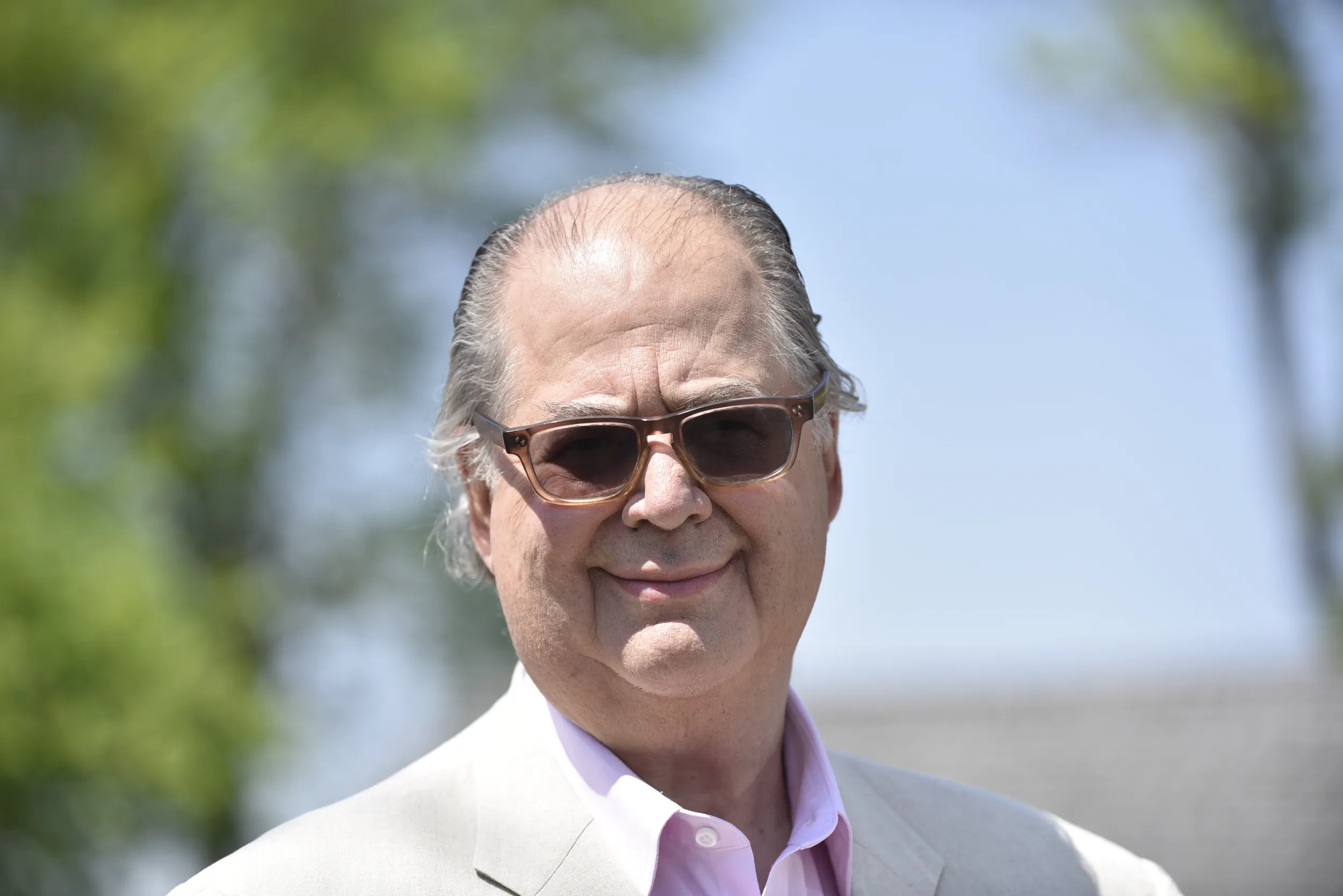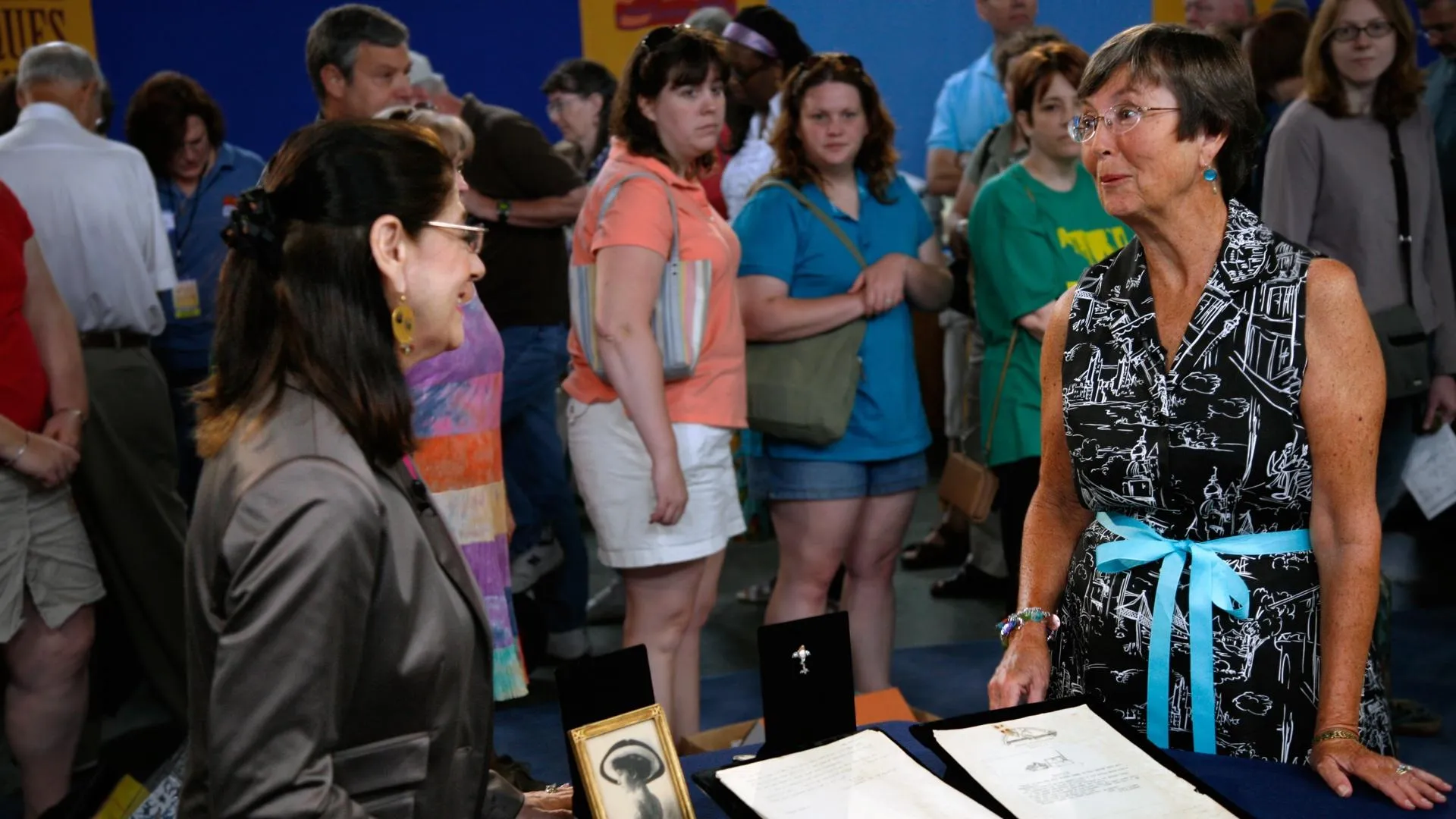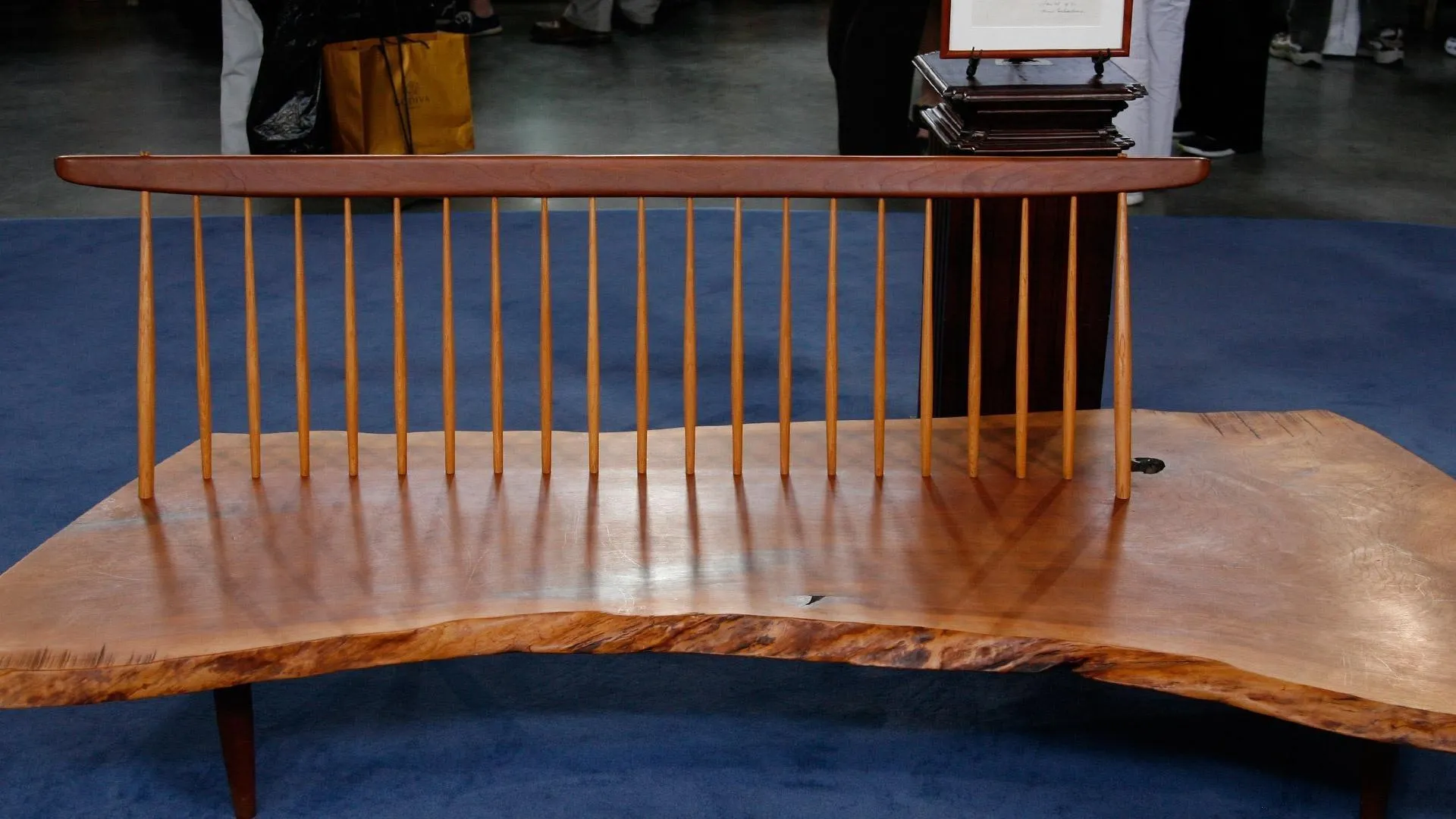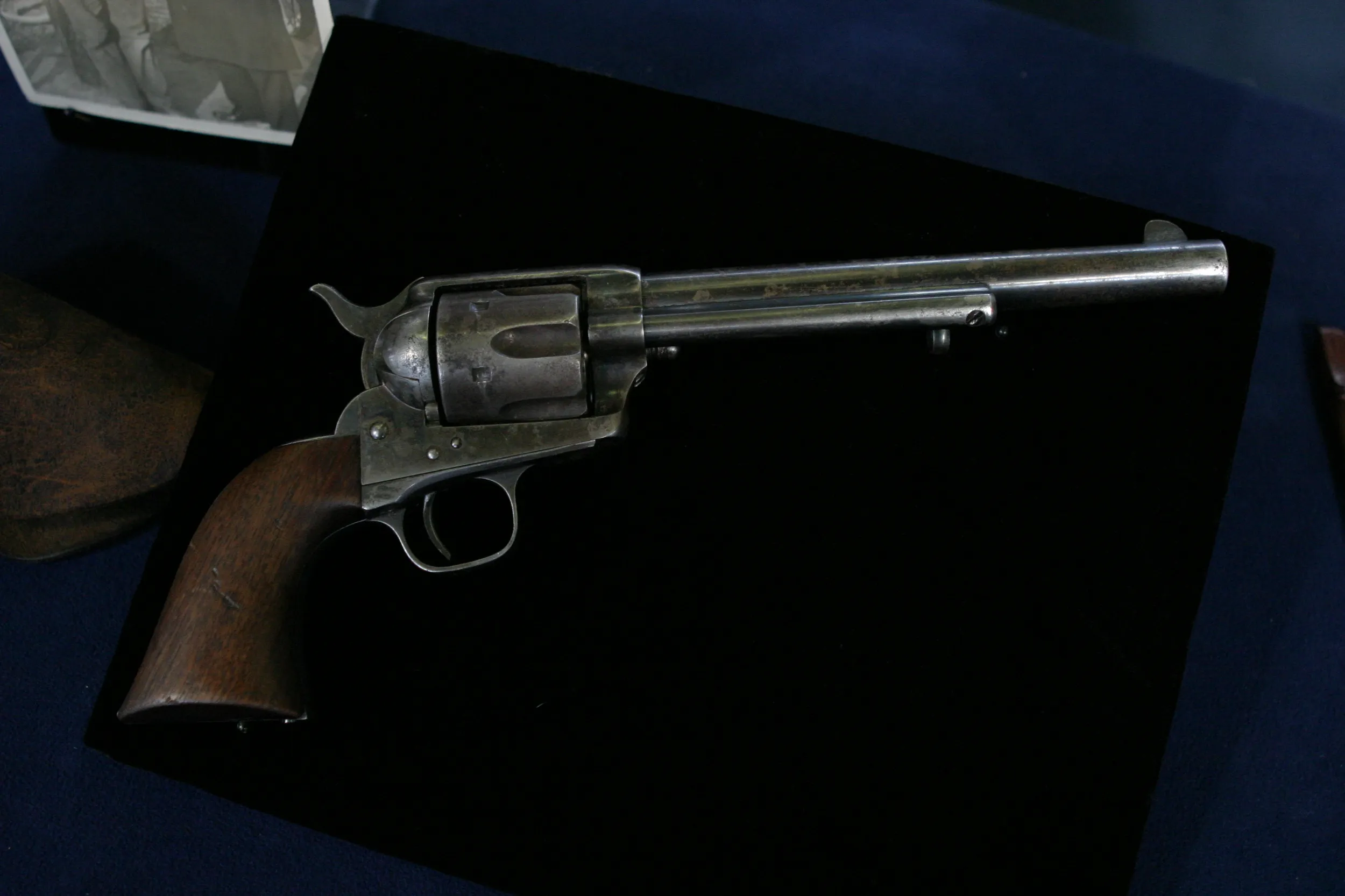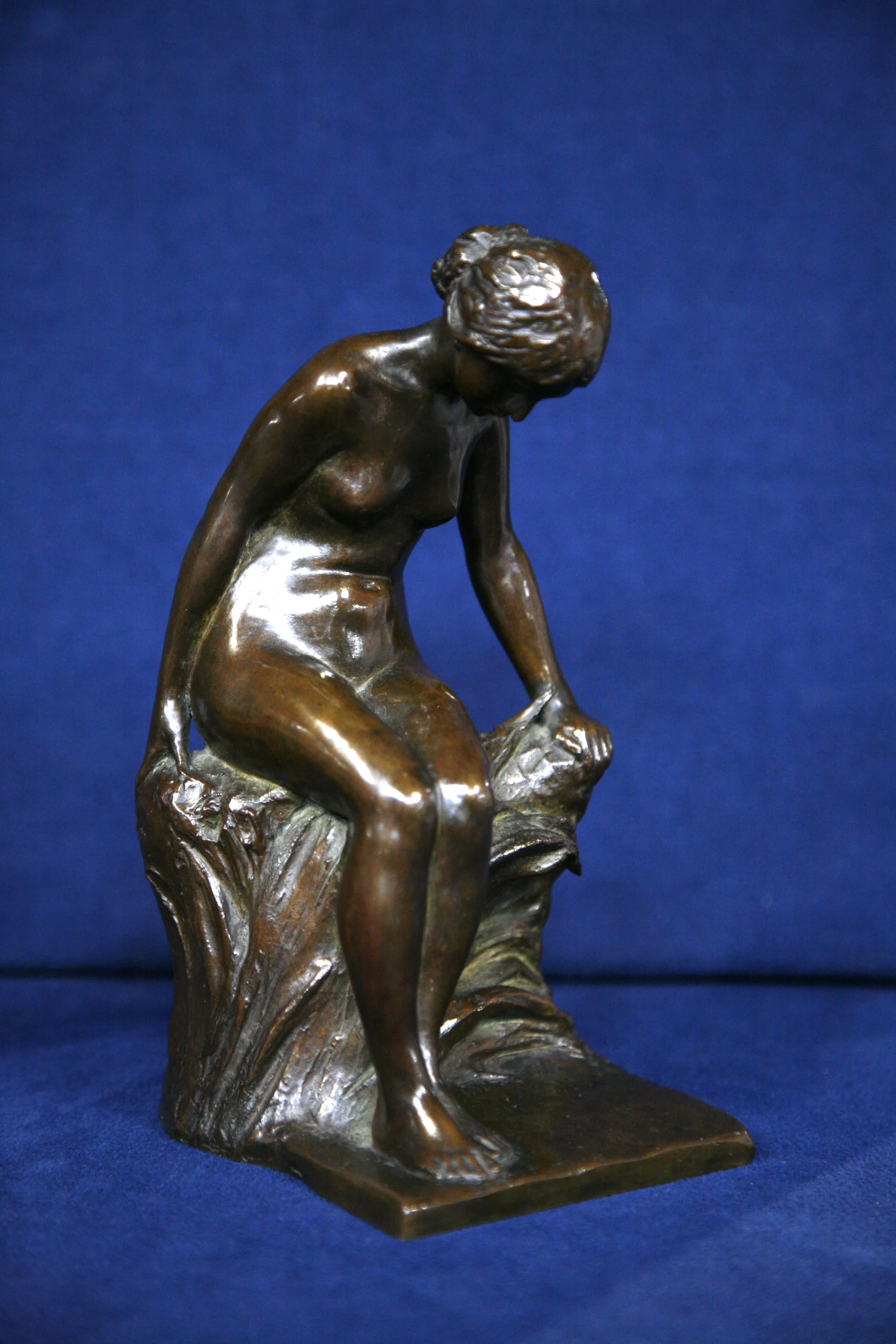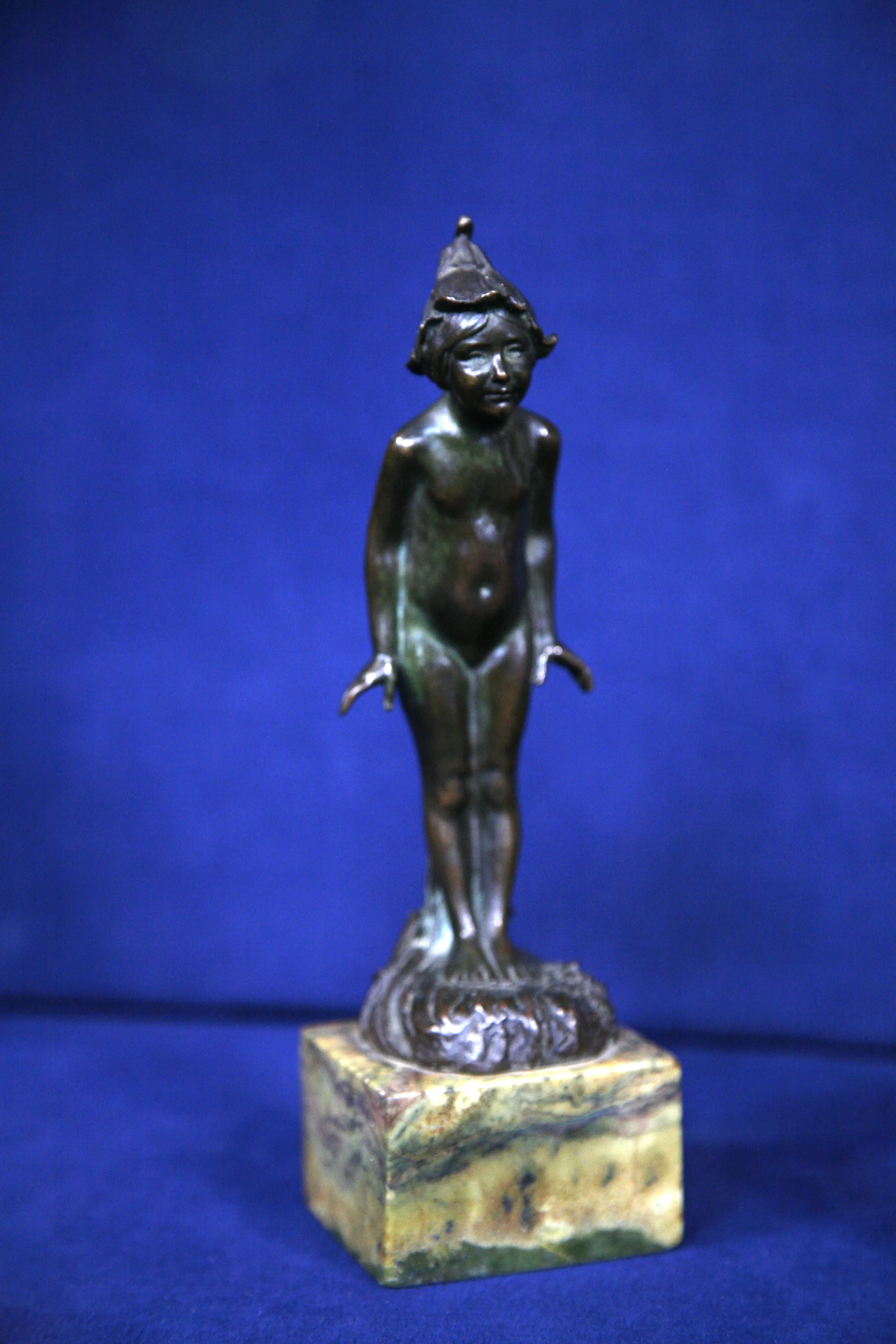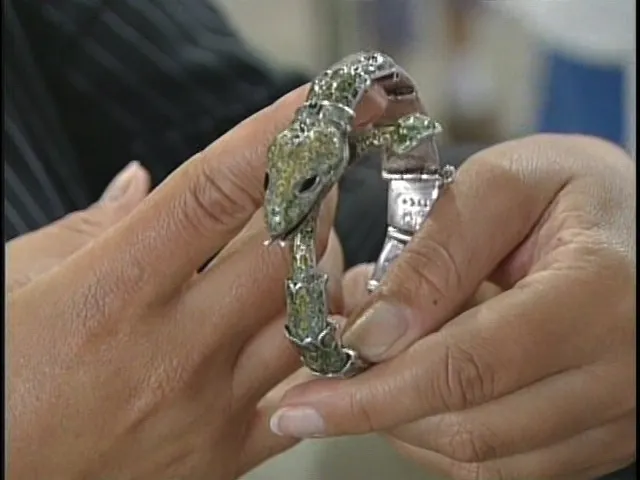GUEST: My mother gave them to my husband, who admired them for many years. But my mother grew up on a beautiful farm in Greenville, Maine, beautiful mountain- lake region, and in the summer, they boarded travelers, and one of the boarders that came very often was a Baltimore socialite. Her name was Eleanor Duvall. A lot of these things we have that belonged to her came through my mother, and then she gave these to us last summer. And when we brought them back home to Baltimore, we learned that they were Berges. He was a popular sculptor, turn of the century, and other than that, I don't know a whole lot more.
APPRAISER: Okay. Actually, we think his name was pronounced "Ber-guee."
GUEST: Berge, okay.
APPRAISER: Right, Edward Berge.
GUEST: Okay.
APPRAISER: And he was born in Baltimore and he studied here, at the Rinehart School, and he later became a teacher at the Maryland Institute. These
pieces I would probably date from the 1920s or so.
GUEST: Mm-hmm.
APPRAISER: He was trained in a more classical tradition. The beginning of the 20th century, there was a lot of avant-garde work going on, but he chose this traditional path.
GUEST: Hm. They're beautiful.
APPRAISER: And that's exemplified in this wonderful nude...
GUEST: Yes.
APPRAISER: ...that's beautifully observed and beautifully modeled. What he's really known for are his fountains. This is actually his most famous piece. It's called "Wildflower," and he did a whole series of these pieces based on different flowers. And they're really quite wonderful. And I said it was a fountain, and this is a reduction.
GUEST: Right.
APPRAISER: He did these in a few different sizes.
GUEST: Mm-hmm.
APPRAISER: This was the smallest size. He did one about 12 inches high, and then there's another one that's about 40 inches high. And this one, not only is it signed by Berge himself, but in addition, it's signed here with "RBW"...
GUEST: RBW.
APPRAISER: ...which is the Roman Bronze Works.
GUEST: Roman Bronze.
APPRAISER: They were in New York. The Roman Bronze had the models for these, and they were cast for a very long time by the family. And I think some of them were cast well into the 1950s, if not the 1960s. It's really beautifully done, very nicely detailed with a beautiful patina. This one also is wonderful, because it has a great patina on it.
GUEST: Yeah.
APPRAISER: It's nicely modeled. This one has a different foundry on it. The foundry here is the Zappo Foundry in New York. And it was very common for artists to have their things cast at different foundries.
GUEST: I see.
APPRAISER: In terms of the value, this reduction of his piece called "Wildflower" at auction would probably bring between $2,000 and $3,000.
GUEST: No kidding. Oh, no.
APPRAISER: And this young lady here, again, beautifully cast bronze, I would think at auction would probably bring $3,000, $4,000.
GUEST: Oh, no. (laughs)
APPRAISER: Well, thanks for bringing them in.
GUEST: Well, thank you so much.
APPRAISER: Good.
